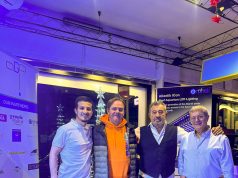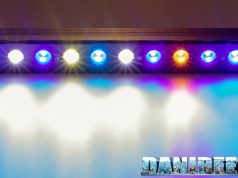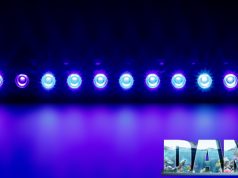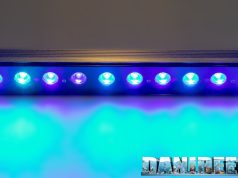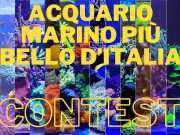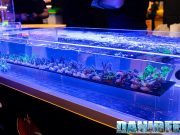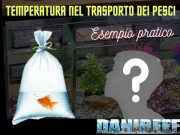Our new DaniReef LAB working method for measuring PARs
In the long nights spent on our forum (here) we have always wondered how we could reason to be able to comparison of the PAR values of the different ceiling lights. Until now, although we have the appropriate instrument, the Quantum Meter MQ-500 from Apogee, we have always referred only to the value measured at the center about 20 cm away from the ceiling light.
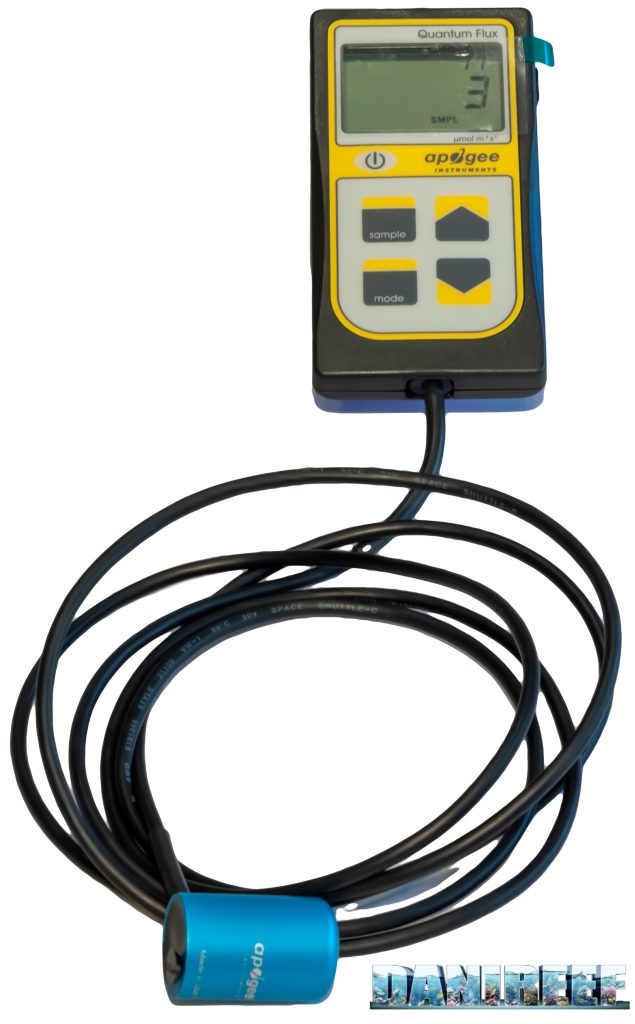
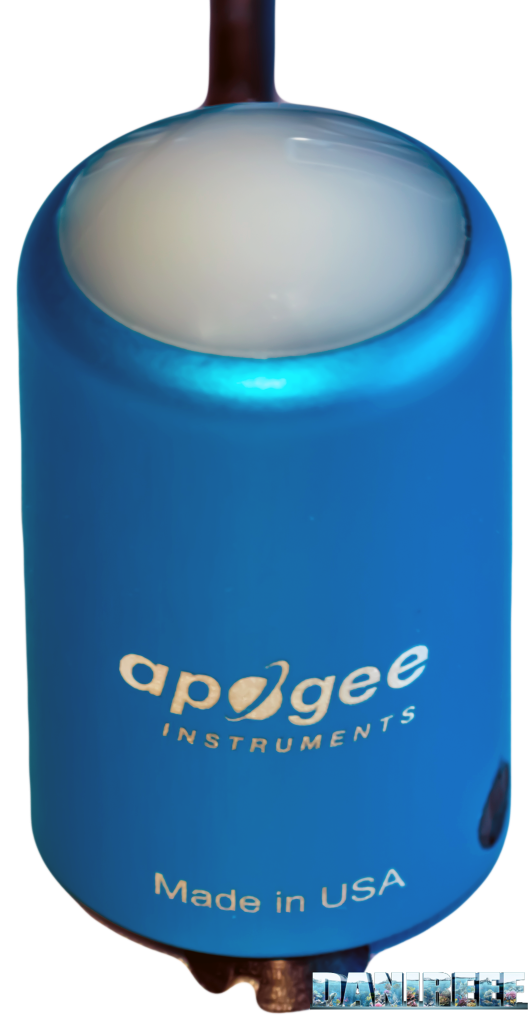
The Quantum Meter MQ-500 measures PAR, expressed in PFFD or photosynthetic photon flux density (photosynthetic photon flux density) in μmol m-2 s-1. This instrument is calibrated to work out of ‘water, so used in water the measured value must be multiplied by 1.32 which is the immersion factor. Since there is no water, at the time of the tests we will see, we do not have to do the conversion. The values that you will see will always be those read by the instrument.
So we decided to build a 70×70 cm base, where we indicated 25 fiducial points where we were going to place the sensor of the Quantum Meter MQ-500. To place the ceiling light fixture, we created elevations of 20, 40 and 60 cm. So that the values will always be read at the same distance from the sensor. This will allow us to create curves in space that can be compared with those of other ceiling lights, again at the given distances. Note that this distance is measured between the base of the sensor and the base of the ceiling light. In reality, the distance must be decreased by 3.5 cm which is the height of the measuring cylinder and increased by 0.5 cm which is the size of the spacers that allow us to hold the ceiling light fixture up.
In total, the three measurements will then be taken at 17, 37 and 57 cm apart, in the air.
The measurement of PARs at a distance of 17 cm
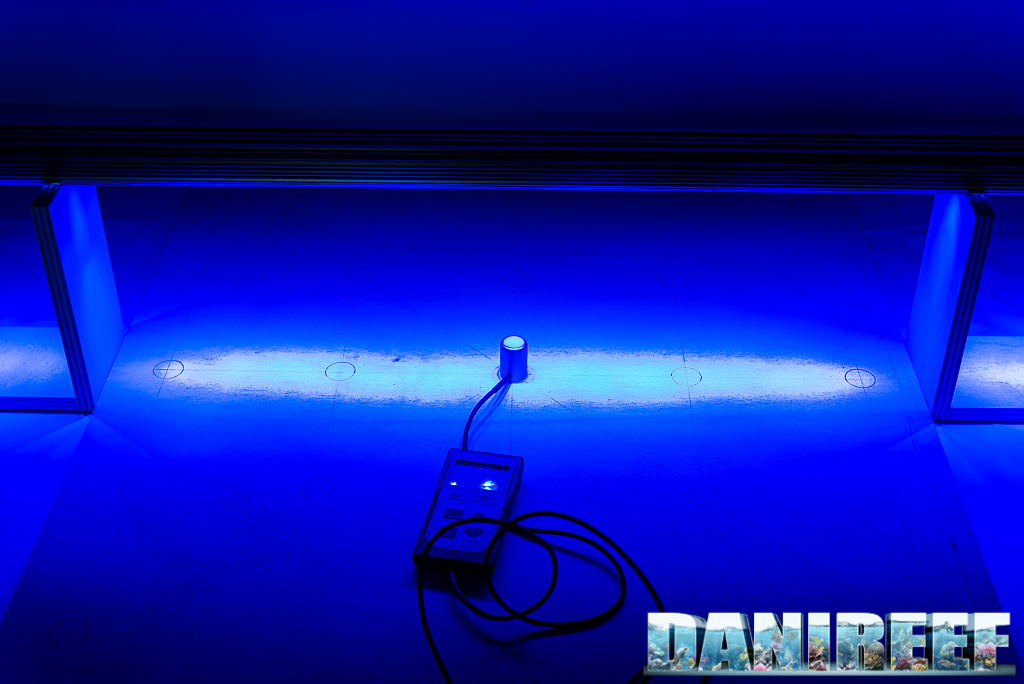
This is the test situation. Below you see the scoreboard, and the instrument, and above you catch a glimpse of the bar resting on the spacers. Points not shown on the board have been estimated in the table below.
These are the measured values:
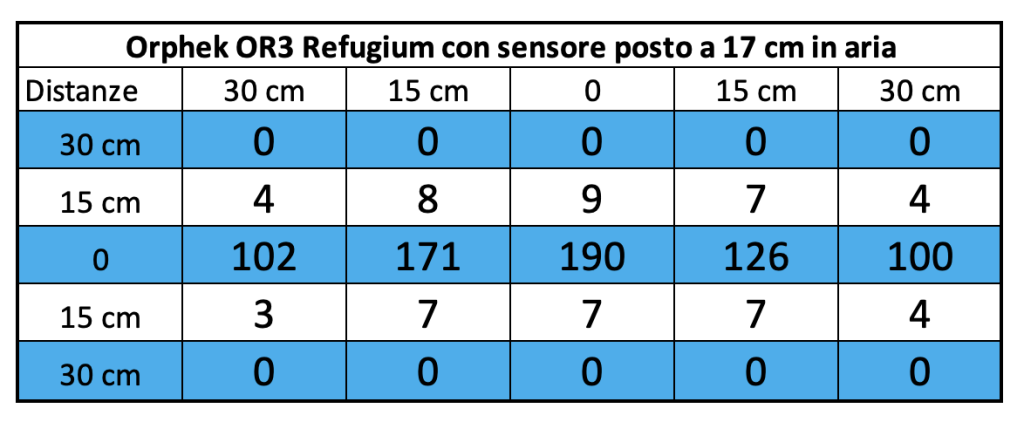
And this is the corresponding graph, for uniformity we will use the same scale for ceiling lights of homologous class, in this case talking about bars we have lowered the value of the maximum scale. In the next bars you will find the same rating scale.
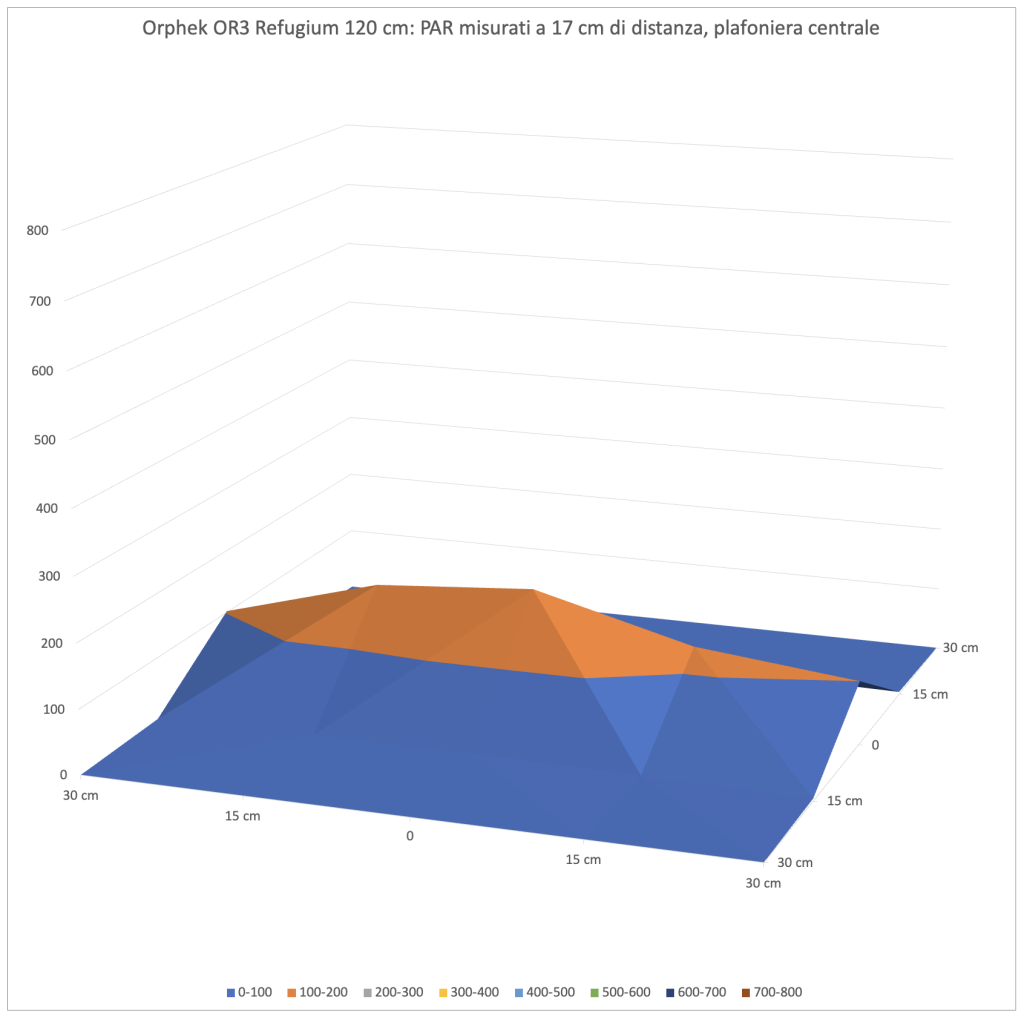
As can be seen, the bar creates a curve that resembles a curtain, with the spatial differences due to the type of LEDs used. Unlike classical ceiling lights therefore the decay is very linear, being about 20 cm from the light source. Virtually no PAR output at the extremes, and there is also a lack of symmetry at the top of the graph.
The measurement of PARs at a distance of 37 cm
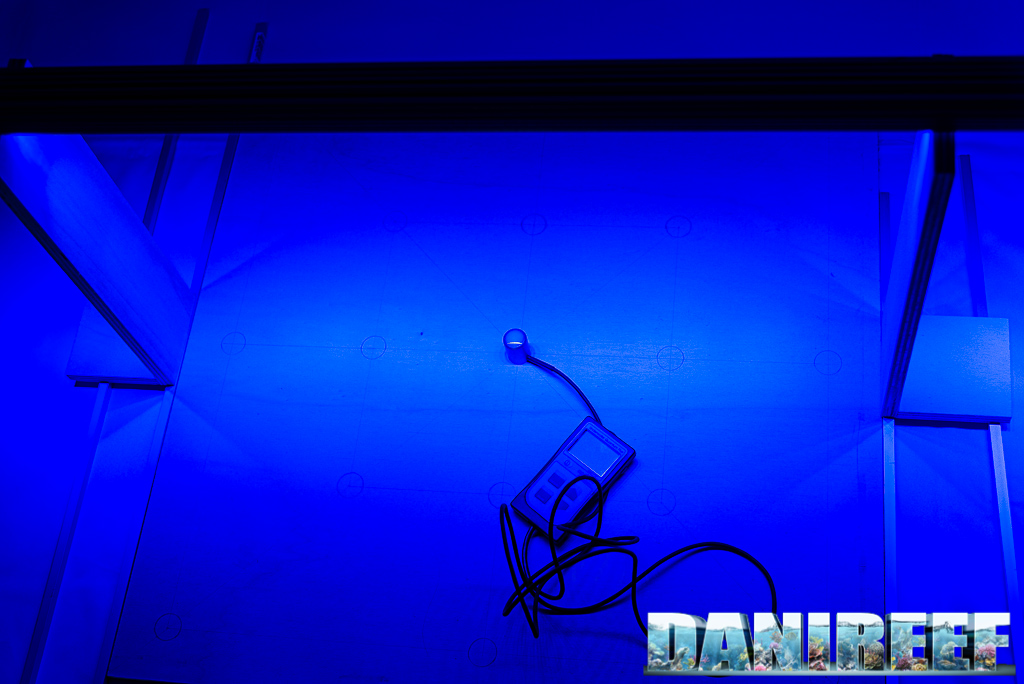
This is the test situation. Below you see the board, and the instrument, and above the ceiling light resting on the spacers.
These are the measured values:
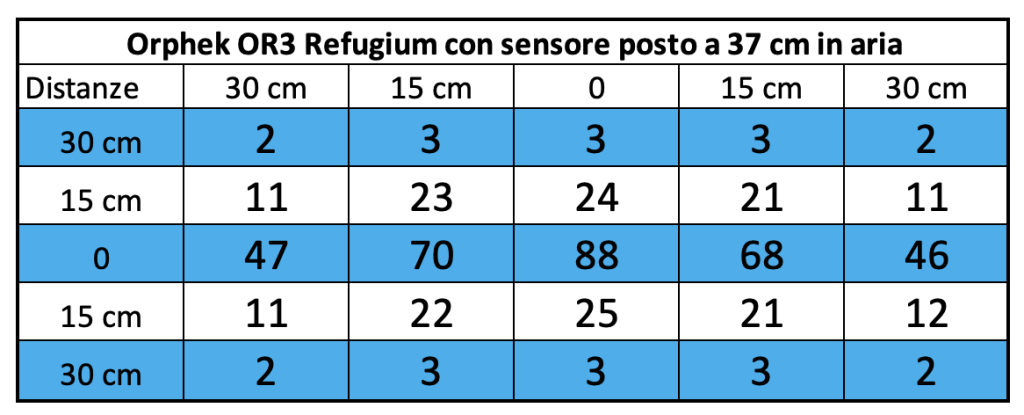
And this is the corresponding graph, for uniformity we will use the same scale for ceiling lights of homologous class, that is, similar in power and type.
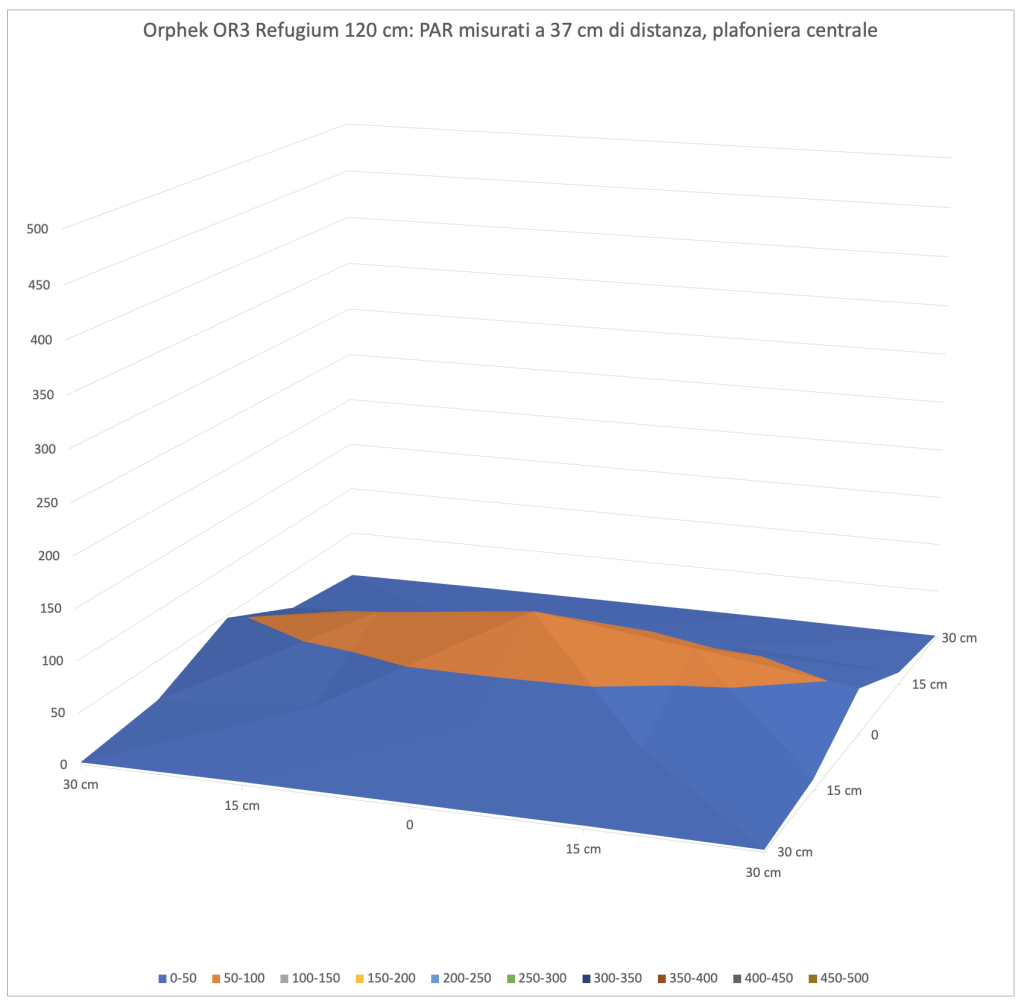
As the space between the ceiling light and the sensor increases, the difference between the PARs measured at the center and at the edges decreases. The light expands greatly, but the central value decreases from 190 to 88 μmol m-2 s-1, taken at the two brightest points.
It jumps out at you that the coverage is full, but much less powerful than a ceiling light such as the Orphek OR3 Blue Sky aimed at illuminating corals. As is easy to verify with the same curve subtended by the Orphek OR3 Blue Sky and shown below. Same distance, same scale.
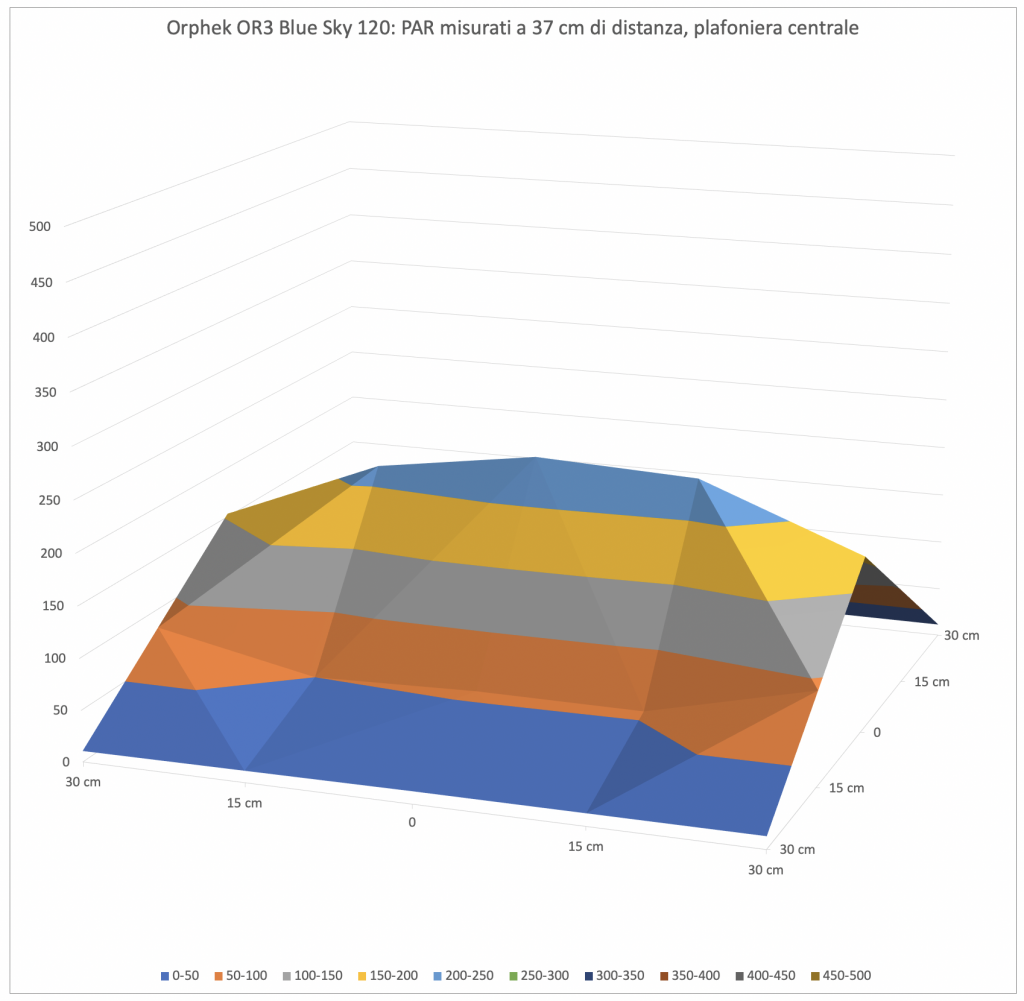
The measurement of PARs at a distance of 57 cm

This is the test situation. Below you see the board, and from this distance you can see the instrument very well, and the ceiling light fixture resting on the spacers. Visually, the illuminated area is extremely large, and therefore the specific power per cm decreases.
These are the measured values:
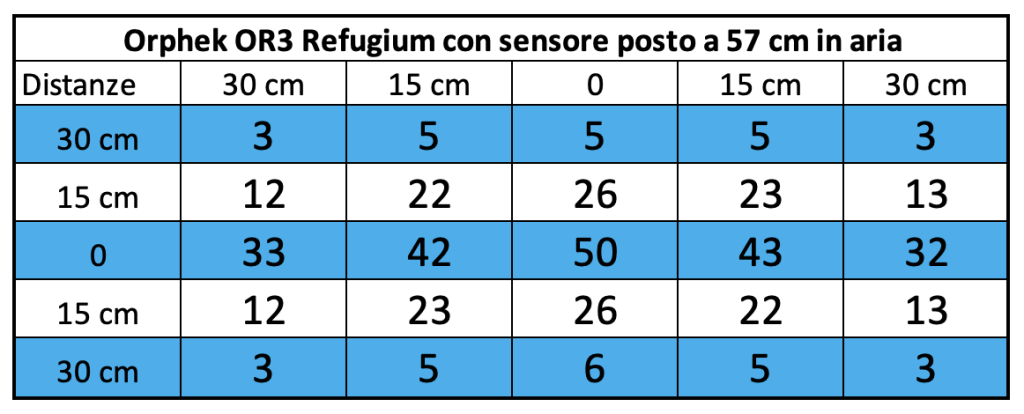
And this is the corresponding graph, for uniformity we will use the same scale for ceiling lights of homologous class, that is, similar in power and type.
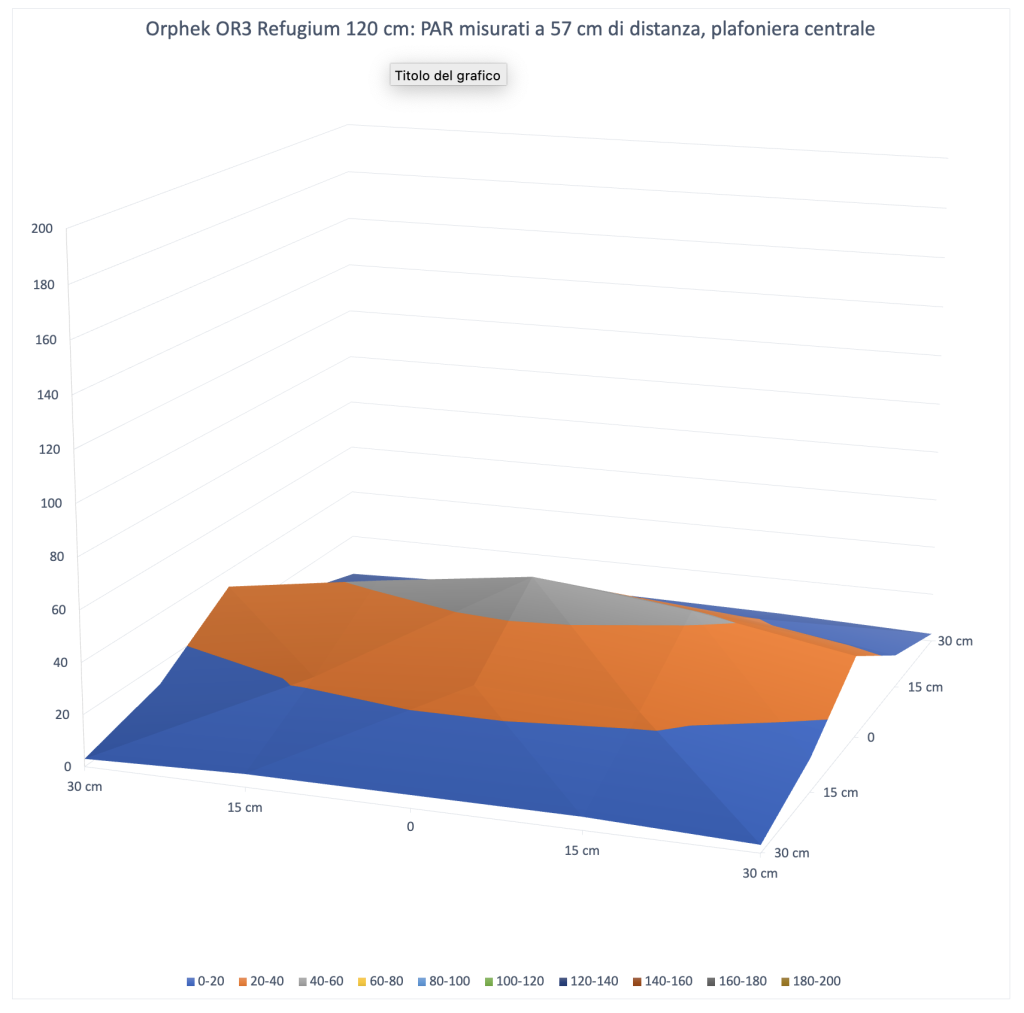
By increasing the space between the ceiling light fixture and the sensor again, the difference between the PARs measured in the center and at the edges does not decrease as we would have expected but returns to increase. The uniformity is practically perfect. The center value decreases again from 190 to 88 to 50 μmol m-2 s-1.
PARs in the center in different configurations
We continue with our technical measurements. Next we see how they drop, in a graph, the PAR measurements at the center in the three different distances of the test.
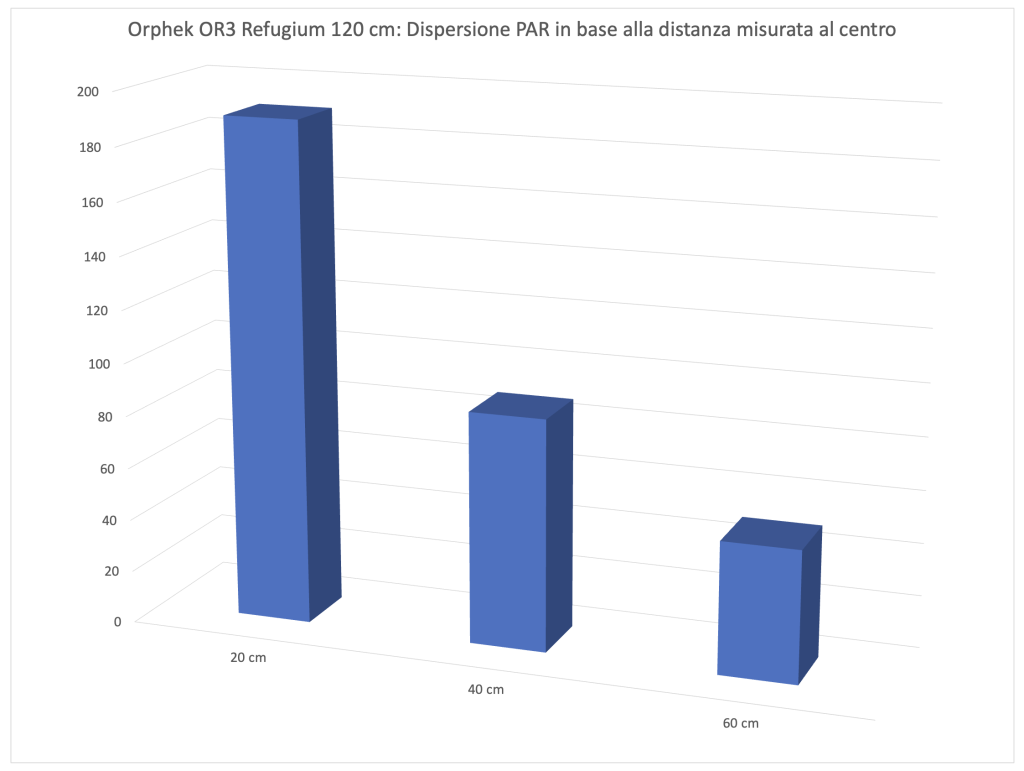
Energy Variation of Orphek OR2 Blue Plus LED Bars Based on Distance
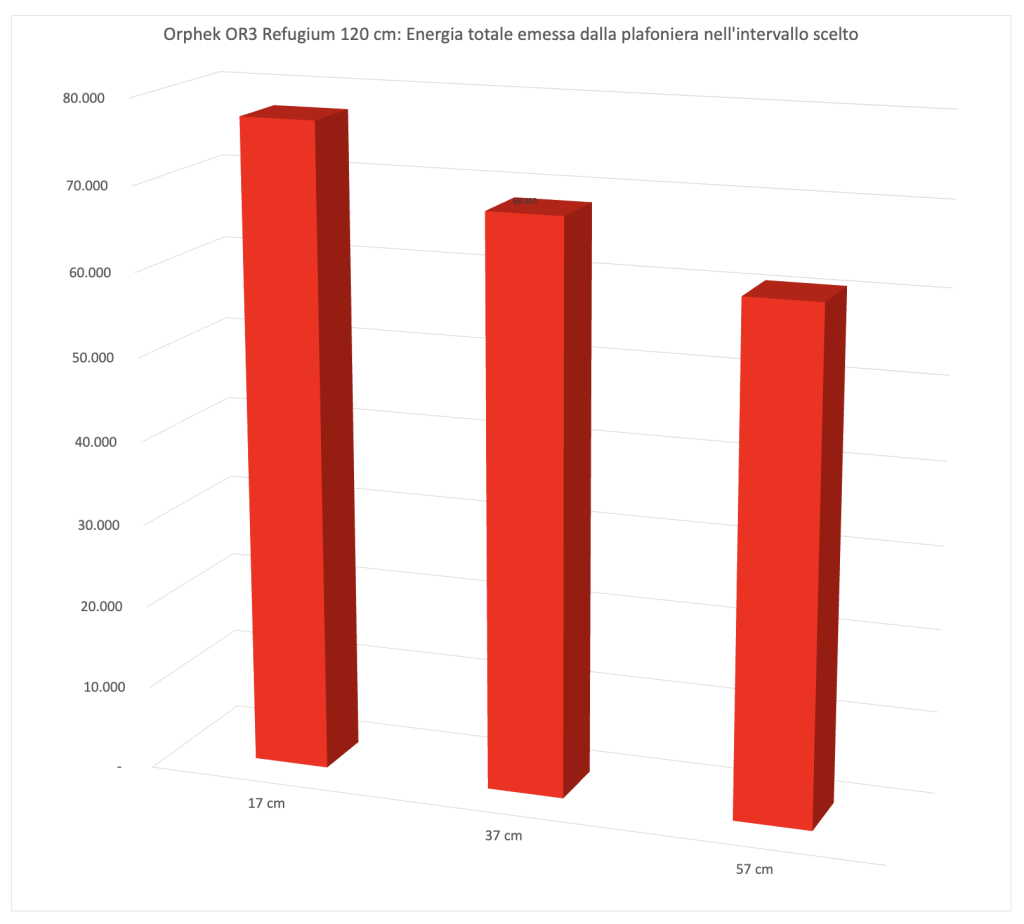
This in my opinion is the most significant of those measured, and the most comparable. The energy variation. The volumes subtended by the three surfaces you saw previously were calculated. Because it is obvious that by moving away from the ceiling light the PAR values drop, but they also drop because the light illuminates a larger space. In this way you try to account for all the light energy contained in the hypothetical 60-cm square subtended by the ceiling light fixture. And you can see that the three values 77,000, 68,000 and 61,000 take on a different connotation than the values measured in the center. When the former decrease a lot because the distances increase, the subtended area, that is, the energy, decreases very slowly. The differences between the three areas is very small indeed. Little, very little, energy is sent out of the subtended area.
In fact, looking at the values of the three curves we see that at the edges there is much more light at 57 cm than at 37. A single bar therefore is ideal for a refugium reaching 45 cm wide in our opinion. For larger widths we recommend adding a second bar.
How to evaluate these numbers in the aquarium?
This is a good question, in the sense that initially we thought we could translate these numbers to the aquarium tout-court. Then we filled an aquarium with water, submerged the probe, and did some measurements again. This displaced us, but, as we have mentioned in previous articles, we will discuss this in a forthcoming follow-up article, which we will then be sure to link below. Basically, while at 20 cm the result is practically coincident, as you submerge, thanks to the glass reflecting the light, and the water itself diffusing it more, you can find values even double those measured in air. Obviously this is not a detail that can be standardized, so we believe that our calculation methodology is the most correct, and the best for comparing the coverage of different ceiling lights.
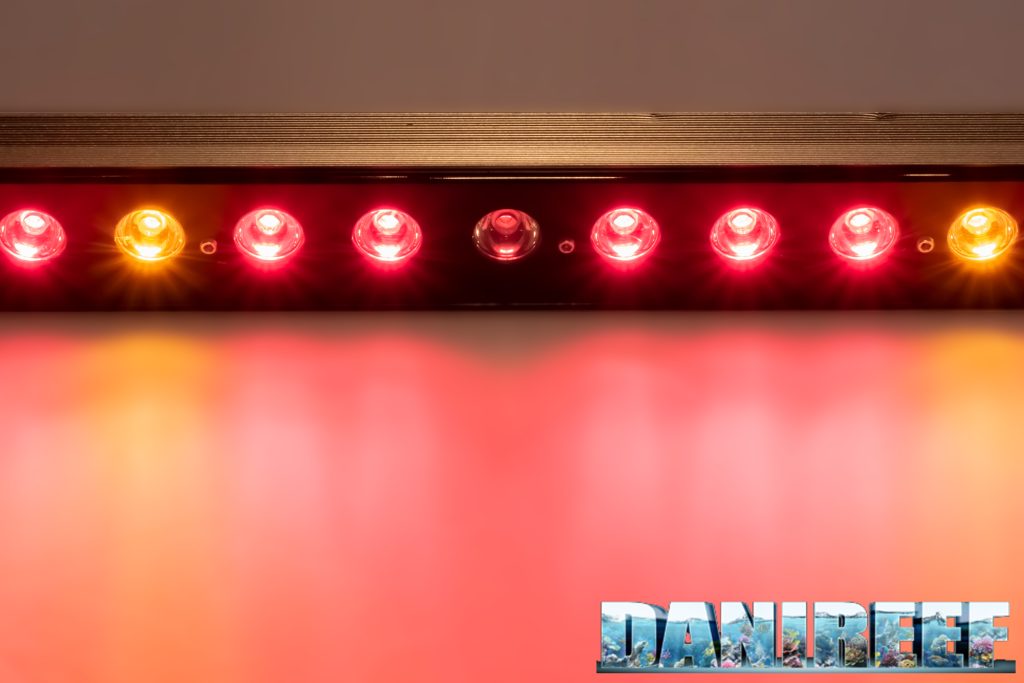
Consumption
The Orphek OR3 Red Plus Grow/Refugium lamp is given for a consumption of 30 watts.
The calculation of the absorbed current and thus the power turns out to be as follows:
Ceiling lamp Orphek OR3 Red Plus Grow/Refugium: 30 watts. Considering that at 17 cm the ceiling light fixture develops 190 μmol m-2 s-1 in the center, it can be said to have a peak value of 6.33 μmol m-2 s-1 w-1 (PAR per watt) for perspective. This value is difficult to compare with a normal ceiling light because of the completely different spectrum.
As we have already had occasion to say for its OR3 sisters, the LED bar is simply impeccably built. Solid, massive, and very well assembled. I really like the extruded profiles as well as the finish. No programming ensures perfect ease of operation, plus you can put several side by side until you get the power you need, although in refugium one will probably be more than enough, at least up to 45 cm wide.
In Italy the Orphek brand is imported and distributed by AGP, synonymous with expertise, professionalism and qualified service.
If you have any questions, doubts or curiosity you can leave a question in the comments below. Also remind you that you can find us on Telegram, Instagram, Facebook, Twitter all the way to youtube, whichever social media you prefer. Where you can follow us not to miss all our news, articles, reviews and reports and if you need to ask for help we are waiting in our forum.



